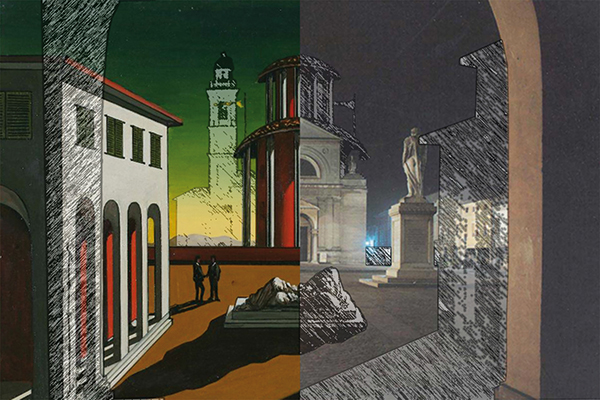The representation of the Italian landscape in the figurative thought of Giorgio de Chirico and Luigi Ghirri
DOI:
https://doi.org/10.15168/xy.v3i6.94Abstract
This article aims to study comparatively the work of G. de Chirico and L. Ghirri on the built image of the landscape. De Chirico implements a real revolution within painting, through the representation of the landscape according to his metaphysical perception. Likewise, Ghirri makes a photographic revolution, in which he recovers the direct and ‘affective’ contact with ordinary things and with the surrounding world. Both the authors dedicate several years of their activity to the landscape theme. In the case of de Chirico this experience was born and materialized in the early years of his production, giving rise to metaphysical painting. De Chirico will continue to develop these studies throughout his life, re−proposing the same landscapes with new points of view. Likewise, Ghirri deals with (in the manner of G. Morandi) the representation of reality as a search for the particular. These studies culminate in publications and exhibitions, including those on the Italian landscape and the Viaggio in Italia exhibition. According to Ghirri we live in a world where all the images of public fruition (mass−media, television, newspapers, etc.) are made up of multiple ‘faces’; the will is to draw attention to the landscape, reconstituting the primordial relationship between man and the environment. Moreover, since the society of the twentieth century is forced to speed up the sight, Ghirri decides to slow down this process to allow man to grasp the ordinary details of the reality that surrounds him. De Chirico represents the ordinary reality of the Italian squares with new methods, cognitively changing the perception of the observer. The sensations of surprise, disorientation, mystery, or anguish arise from the juxtapositions of objects in his landscapes, where de Chirico frequently portrays the same scene, distorting the point of view or the location of the objects. Since De Chirico and Ghirri constituted an important milestone in the history of painting and photography of the modern era, it is interesting to underline how the authors studied comparatively prove to be a turning point for successive generations of painters, architects and photographers.


